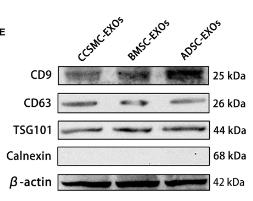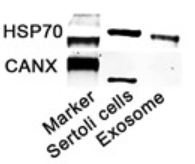产品描述
*The optimal dilutions should be determined by the end user.
*Tips:
WB: 适用于变性蛋白样本的免疫印迹检测. IHC: 适用于组织样本的石蜡(IHC-p)或冰冻(IHC-f)切片样本的免疫组化/荧光检测. IF/ICC: 适用于细胞样本的荧光检测. ELISA(peptide): 适用于抗原肽的ELISA检测.
引用格式: Affinity Biosciences Cat# AF5362, RRID:AB_2837847.
展开/折叠
Calnexin; CALX_HUMAN; CANX; CNX; FLJ26570; Histocompatibility complex class I antigen binding protein p88; IP90; Major histocompatibility complex class I antigen-binding protein p88; p90;
抗原和靶标
- P27824 CALX_HUMAN:
- Protein BLAST With
- NCBI/
- ExPASy/
- Uniprot
MEGKWLLCMLLVLGTAIVEAHDGHDDDVIDIEDDLDDVIEEVEDSKPDTTAPPSSPKVTYKAPVPTGEVYFADSFDRGTLSGWILSKAKKDDTDDEIAKYDGKWEVEEMKESKLPGDKGLVLMSRAKHHAISAKLNKPFLFDTKPLIVQYEVNFQNGIECGGAYVKLLSKTPELNLDQFHDKTPYTIMFGPDKCGEDYKLHFIFRHKNPKTGIYEEKHAKRPDADLKTYFTDKKTHLYTLILNPDNSFEILVDQSVVNSGNLLNDMTPPVNPSREIEDPEDRKPEDWDERPKIPDPEAVKPDDWDEDAPAKIPDEEATKPEGWLDDEPEYVPDPDAEKPEDWDEDMDGEWEAPQIANPRCESAPGCGVWQRPVIDNPNYKGKWKPPMIDNPSYQGIWKPRKIPNPDFFEDLEPFRMTPFSAIGLELWSMTSDIFFDNFIICADRRIVDDWANDGWGLKKAADGAAEPGVVGQMIEAAEERPWLWVVYILTVALPVFLVILFCCSGKKQTSGMEYKKTDAPQPDVKEEEEEKEEEKDKGDEEEEGEEKLEEKQKSDAEEDGGTVSQEEEDRKPKAEEDEILNRSPRNRKPRRE
种属预测
score>80的预测可信度较高,可尝试用于WB检测。*预测模型主要基于免疫原序列比对,结果仅作参考,不作为质保凭据。
High(score>80) Medium(80>score>50) Low(score<50) No confidence
研究背景
Calcium-binding protein that interacts with newly synthesized glycoproteins in the endoplasmic reticulum. It may act in assisting protein assembly and/or in the retention within the ER of unassembled protein subunits. It seems to play a major role in the quality control apparatus of the ER by the retention of incorrectly folded proteins. Associated with partial T-cell antigen receptor complexes that escape the ER of immature thymocytes, it may function as a signaling complex regulating thymocyte maturation. Additionally it may play a role in receptor-mediated endocytosis at the synapse.
Phosphorylated at Ser-564 by MAPK3/ERK1. phosphorylation by MAPK3/ERK1 increases its association with ribosomes (By similarity).
Palmitoylation by DHHC6 leads to the preferential localization to the perinuclear rough ER. It mediates the association of calnexin with the ribosome-translocon complex (RTC) which is required for efficient folding of glycosylated proteins.
Ubiquitinated, leading to proteasomal degradation. Probably ubiquitinated by ZNRF4.
Endoplasmic reticulum membrane>Single-pass type I membrane protein. Endoplasmic reticulum. Melanosome.
Note: Identified by mass spectrometry in melanosome fractions from stage I to stage IV (PubMed:12643545, PubMed:17081065). The palmitoylated form preferentially localizes to the perinuclear rough ER (PubMed:22314232).
Interacts with MAPK3/ERK1 (By similarity). Interacts with KCNH2. Associates with ribosomes (By similarity). Interacts with SGIP1; involved in negative regulation of endocytosis (By similarity). The palmitoylated form interacts with the ribosome-translocon complex component SSR1, promoting efficient folding of glycoproteins. Interacts with SERPINA2P/SERPINA2 and with the S and Z variants of SERPINA1. Interacts with PPIB. Interacts with ZNRF4. Interacts with SMIM22.
(Microbial infection) Interacts with HBV large envelope protein, isoform L.
(Microbial infection) Interacts with HBV large envelope protein, isoform M; this association may be essential for isoform M proper secretion.
Belongs to the calreticulin family.
研究领域
· Cellular Processes > Transport and catabolism > Phagosome. (View pathway)
· Genetic Information Processing > Folding, sorting and degradation > Protein processing in endoplasmic reticulum. (View pathway)
· Human Diseases > Infectious diseases: Viral > HTLV-I infection.
· Organismal Systems > Immune system > Antigen processing and presentation. (View pathway)
· Organismal Systems > Endocrine system > Thyroid hormone synthesis.
文献引用
Application: WB Species: Human Sample:
Application: WB Species: Mice Sample: Tumour cells
Application: WB Species: Human Sample:
限制条款
产品的规格、报价、验证数据请以官网为准,官网链接:www.affbiotech.com | www.affbiotech.cn(简体中文)| www.affbiotech.jp(日本語)产品的数据信息为Affinity所有,未经授权不得收集Affinity官网数据或资料用于商业用途,对抄袭产品数据的行为我们将保留诉诸法律的权利。
产品相关数据会因产品批次、产品检测情况随时调整,如您已订购该产品,请以订购时随货说明书为准,否则请以官网内容为准,官网内容有改动时恕不另行通知。
Affinity保证所销售产品均经过严格质量检测。如您购买的商品在规定时间内出现问题需要售后时,请您在Affinity官方渠道提交售后申请。产品仅供科学研究使用。不用于诊断和治疗。
产品未经授权不得转售。
Affinity Biosciences将不会对在使用我们的产品时可能发生的专利侵权或其他侵权行为负责。Affinity Biosciences, Affinity Biosciences标志和所有其他商标所有权归Affinity Biosciences LTD.

















